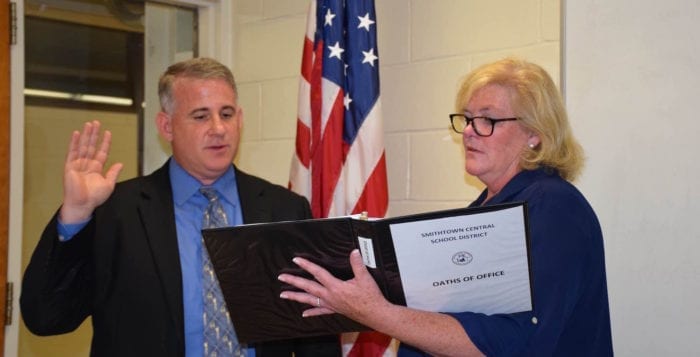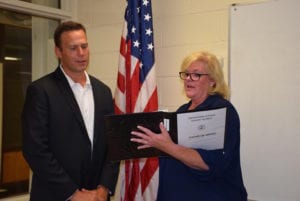I believe the most salient teaching point in medical school and beyond was when a professor explained, as it relates to the patient diagnosis, when you hear hooves think horses not zebras. What this means is think of the more common or more likely diseases or disorders in a differential diagnosis rather than the more esoteric or rare diseases. And when a patient presents with fatigue, one of the more common reasons is iron deficiency.
Major causes of low iron are anemia of chronic disease, iron deficiency anemia, sideroblastic anemia and thalassemia. Of these, iron deficiency anemia is the most common. However, there is a much less known, but not uncommon, form of low iron. This is called iron deficiency without anemia. Unlike iron deficiency anemia, the straightforward CBC (complete blood count) that is usually drawn cannot detect this occurrence since the typical indicators, hemoglobin and hematocrit, are not yet affected.
So how do we detect iron deficiency without anemia? Not to despair, since there is a blood test done by major labs called ferritin. What is ferritin? Ferritin is a protein that is involved in iron storage. When ferritin is less than 10 to 15 ng/ml, the diagnosis of iron deficiency is most likely indicated. Even healthy people with ferritin slightly higher than this level may also have iron deficiency (1). The normal range of ferritin is 40-200 ng/ml.
At this point, you should be asking who does low ferritin affect and what are the symptoms? Women and athletes are affected primarily, and low ferritin levels may cause symptoms of fatigue. It is also seen with some chronic diseases such as restless leg syndrome (RLS) and attention deficit hyperactivity disorder (ADHD) in children.
Effect on women
In a prospective (forward-looking) study done in 1993 looking at primary care practices, it was determined that 75 percent of patients complaining of fatigue were women (2). Interestingly, less than 10 percent of these women had abnormal lab results when routine labs were drawn, most probably without a ferritin level. Many of them had experienced these symptoms for at least three months.
There was a randomized controlled trial (RCT), the gold standard of studies, that showed women who were suffering from fatigue and low or low-normal ferritin levels (less than 50 ng/ml), but who did not have anemia, benefited from iron supplementation (3). When comparing women with these ferritin levels, many of those who were given 80 mg of oral prolonged release ferrous (iron) sulfate supplements daily saw a significant improvement in their fatigue symptoms when compared to those women who were not given iron. Almost half the women taking iron supplements had a significant improvement in fatigue symptoms. The results were seen in a very short 12-week period. This is nothing to sneeze at, since fatigue is one of main reasons people go to the doctor. Also, although this was a small study, there were 198 women involved, ranging from 18 to 53 years old.
There are caveats to these study results. There was no improvement in depression or anxiety symptoms, nor in overall quality of life. Even though it was blinded, stool changes occur when a patient takes iron. Therefore, the women taking supplements may have known. Nonetheless, the study results imply that physicians should check ferritin level, not only a CBC, when a premenopausal woman complains of fatigue. Note that all of the women in the study were premenopausal. This is important to delineate, since postmenopausal women are at much higher risk of iron overload, rather than deficiency. They are no longer menstruating and therefore do not rid themselves of significant amounts of iron.
Athletes
According to an article in The American Journal of Lifestyle Medicine, athletes’ endurance may be affected by iron deficiency without anemia (4). Low ferritin levels are implicated, as in the previous study. Iron is important for exercise motivation and may play a role in peak mental functioning, as reported in “Iron: Nutritional and Physiological Significance.” In animal studies, iron deficiency without anemia is associated with reduction in endurance because of a decrease in oxygen-based enzymatic activity within the cells.
However, this has not been shown definitively in human athletes and remains an interesting, but yet to be proven, hypothesis. Interestingly, female endurance athletes are more likely to be affected by iron deficiency without anemia, which occurs in about 25 percent of this population, according to studies (5). Low ferritin is not seen as much in male athletes. This difference in gender may be due to the fact that women not only menstruate, losing iron on a regular basis, but also their intake of dietary iron seems to be lower (6).
However, male athletes are not immune. At the end of the season for high school runners, 17 percent had iron deficiency without anemia (7). Do not take iron supplements without knowing your levels of hemoglobin and ferritin and without consulting a doctor. Studies are mixed on the benefits of iron supplementation without anemia for athletes.
Impact on restless leg syndrome
Iron deficiency with a ferritin level lower than 50 ng/ml affects approximately 20 percent of patients who suffer from restless leg syndrome (8). Restless leg syndrome, classified as a neurologic movement disorder, causes patients to feel like they need to move their legs, most commonly about a half-hour after going to bed. In a very small study, patients with restless leg syndrome who had ferritin levels lower than 45 ng/ml saw significant improvement in symptoms within eight days with iron supplementation (9).
Before you get too excited, the caveat is that 75 percent of restless leg patients have high ferritin levels. It is impressive in terms of being an easy fix for those who have low ferritin levels. And, it may be that high ferritin levels in RLS has the same symptoms as low ferritin for this is the case when it comes to iodine levels in hypothyroid patients. Iron is a trace mineral, meaning we only need small amounts to maintain proper levels.
Ferritin levels — both high and low — may play a role in a number of diseases and symptoms. If you are suffering from fatigue, a CBC test may not be enough to detect iron deficiency. You may want to suggest checking your ferritin level. Though iron supplementation may help those with symptomatic iron deficiency without anemia, it is very important not to take iron supplements without the direct supervision of your physician.
References: (1) Br J Haematol. 1993;85(4):787-798. (2) BMJ 1993;307:103. (3) CMAJ. 2012;184(11):1247-1254. (4) Am J Lifestyle Med. 2012;6(4):319-327. (5) J Am Diet Assoc. 2005;105:975–978. (6) J Pediatr. 1989;114:657–663. (7) J Adolesc Health Care. 1987;8:322–326. (8) Am Fam Physician. 2000;62(4):736. (9) Sleep Med. 2012;13(6):732-735. Dr. Dunaief is a speaker, author and local lifestyle medicine physician focusing on the integration of medicine, nutrition, fitness and stress management. For further information, visit www.medicalcompassmd.com or consult your personal physician.






 How did you get involved in bartering?
How did you get involved in bartering? 










